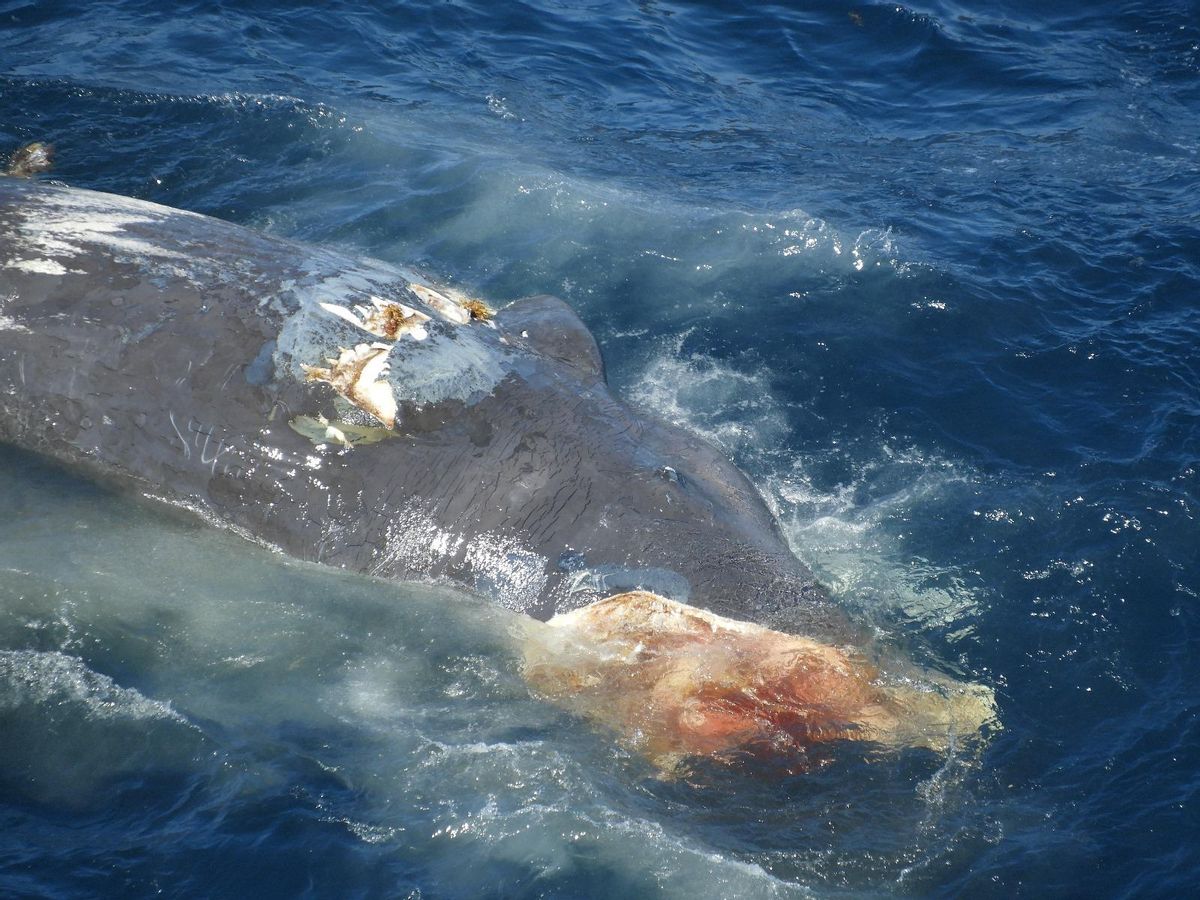Painful images for anyone, especially a marine biologist. A few weeks ago, the coast of Tenerife witnessed the death of two sperm whales, one stranded and the other floating adrift in the sea, a situation that has led professionals to raise their voices again to alert of the risks to these and other cetaceans in Canary waters.
Regarding sperm whales, it is noteworthy that unlike other parts of the world, in the Canary Islands, they are frequently seen near the surface throughout the year. A paradise for animals until leisure or fishing boats end up colliding with them.
This is a longstanding claim by professionals but has become, if possible, more relevant in recent months given the drastic reduction in the population of these animals in the sea off the Islands. Awareness campaigns or complaints on social media, any way is valid to alert the public and especially public institutions to the consequences for the future of the species.

Example of a sperm whale dead adrift in Canary waters. / El Día
Anger and sadness
One of the most discussed posts was published by marine biologist Pablo Dive, who shared the transfer of the carcass of one of these decapitated sperm whales. “A tremendous anger and sadness at seeing such an impressive animal with its head split in half”, summarises the professional, who advocates for spreading the images to raise awareness
With a broken heart, Dive understands that the reality must be seen: “We have a problem we can no longer ignore”, he points out before describing the situation as “sad and worrying”. As the biologist recalls, in recent years “whale heads keep appearing or the animal directly split in half”.
“A small boat doesn’t do this. And they don’t have a predator capable of doing it”, notes the expert, who recalls the first time he had the opportunity to see a live specimen of this type of cetacean.
He also gives advice to the public in case they find a stranded specimen or one in a similar situation on the Canary coasts. Besides calling the Emergency and Security Coordination Centre (Cecoes) 112 to handle the rescue or removal, Pablo Dive recommends not touching the animal and keeping a distance.
Read here about the recent sperm whale deaths
The risks of ships
The sperm whale is an animal that holds many records: the largest predator in the ocean, the one that emits the most powerful sounds to echolocate its prey at a distance in the vast darkness of the deep waters, the largest nose on the planet (necessary to emit its powerful echolocation clicks) and the largest brain in the animal world
“Despite this large brain, they still haven’t learned to avoid collisions with ships”, lament researchers from the IEO and the ULL who refer to land traffic to explain the risks of navigation: “humans impose speed limits on traffic in populated areas, we do not allow cars to accelerate to the maximum of their capabilities but in the ocean, the speed limit is set by technology”.
They point out that in the same lifespan as a sperm whale, about 70 years, both the speed of ships and the number of ships sailing in the habitat of these cetaceans have doubled.
Furthermore, ships affect the rest that sperm whales take on the surface before performing “their diving feats”. “If their rest is interrupted every time they hear a ship approaching, they will not be able to regain strength to hunt at about three kilometres depth and in two-hour-long apnea”, scientists explain.
















